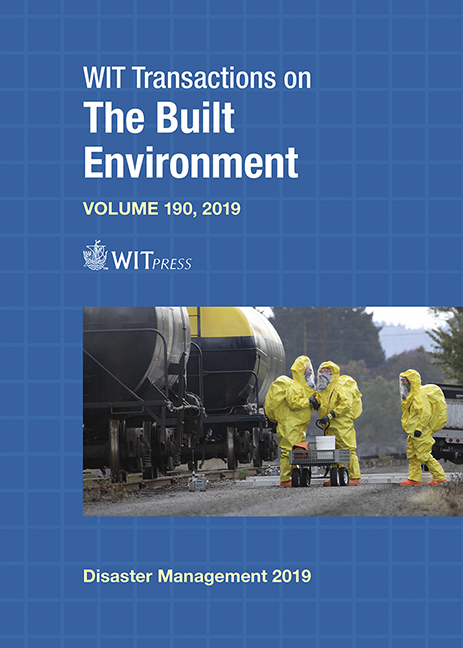QUANTIFYING PHYSICAL AND PSYCHOLOGICAL IMPACTS OF EXPLOSIVE ATTACKS ON BUILDING OCCUPANTS
Price
Free (open access)
Transaction
Volume
190
Pages
8
Page Range
191 - 198
Published
2019
Size
421 kb
Paper DOI
10.2495/DMAN190171
Copyright
WIT Press
Author(s)
STEVEN SCHULDT, AHMET SOYLEMEZOGLU, NOAH GARFINKLE, KHALED EL-RAYES
Abstract
Personnel suffer devastating physical and psychological impacts from explosive terrorist attacks targeting buildings. Explosive attacks produced 42,972 casualties in 2017 alone and survivors of terrorist attacks experience post-traumatic stress disorder (PTSD) at rates as high as 40%. Designers use three primary strategies to protect buildings and their occupants against explosive terrorist attacks: (1) maximize the distance between a building and where an explosive can be easily placed; (2) construct perimeter blast walls; and (3) employ blast-resistant building materials. This paper presents a personnel impact assessment model capable of efficiently quantifying physical and psychological impacts experienced by the occupants of buildings damaged by explosive attacks. The model provides a comprehensive analysis of significant personnel impacts, including fatalities, serious injuries, minor injuries, and occurrences of PTSD. Model performance was evaluated using case studies of single and multi-building sites, and the results illustrated the model’s expediency and flexibility. These capabilities are expected to assist building designers in their critical task of analyzing and selecting the design strategy that minimizes the security risks to site personnel from the threat of explosive terrorist attacks.
Keywords
blast effects, consequence, post-traumatic stress disorder, injury, terrorism




